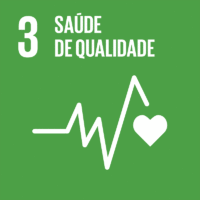Ciência_Iscte
Publicações
Descrição Detalhada da Publicação
Título Revista
International Journal of Mental Health and Addiction
Ano (publicação definitiva)
2020
Língua
Inglês
País
Estados Unidos da América
Mais Informação
Web of Science®
Scopus
Google Scholar
Esta publicação não está indexada no Google Scholar
Abstract/Resumo
New psychoactive substances (NPS) continue to be considered as a major public health concern in many European countries. The study was implemented within the framework of a transnational project of six European countries (Germany, Hungary, Ireland, Netherlands, Poland, Portugal). Our aim here is to report on the distinct and differentiating characteristics of marginalised NPS users. Three subgroups of a total of 3023 adult NPS users (socially marginalised, night life, online community) were examined regarding their sociodemographic haracteristics, substance use, and external motives towards NPS use. Poland and Hungary reported higher rates of NPS use in comparison to traditional controlled drugs.The external/contextual motives did not play a central role in the background of NPS use, the least important motives were alleged legality and non-detectability of these substances.
Marginalised (defined as those accessing low threshold harm reduction services) users’ substance use patterns are different from the other two groups in terms of showing more intense and riskier drug use. The most important variables which contributed to be categorised as a marginalised NPS user were lower level education, being older, having an unfavourable labour market position and using drugs intravenously. Contextual motives did not play a
decisive role in being categorised as a marginalised user when drug use pattern was controlled. These identified discriminative features of marginalised drug users should inform policy makers to develop and implement tailor-made interventions targeting this user group to successfully tackle the elevated public health concerns associated with NPS use.
Agradecimentos/Acknowledgements
--
Palavras-chave
NPS use,User groups,Contextual motivation,Public health concern,Drug policy
Classificação Fields of Science and Technology
- Sociologia - Ciências Sociais
Registos de financiamentos
| Referência de financiamento | Entidade Financiadora |
|---|---|
| HOME/2014/JDRU/AG/DRUG/7077 | Comissão Europeia |
| KKP126835 | Hungarian National Research, Development and Innovation Office |
| 783-3/2018/FEKUTSRAT | Hungarian Ministry of Human Capacities (ELTE Institutional Excellence Program) |
| UID/SOC/03126/2013 | Fundação para a Ciência e a Tecnologia |
Contribuições para os Objetivos do Desenvolvimento Sustentável das Nações Unidas
Com o objetivo de aumentar a investigação direcionada para o cumprimento dos Objetivos do Desenvolvimento Sustentável para 2030 das Nações Unidas, é disponibilizada no Ciência_Iscte a possibilidade de associação, quando aplicável, dos artigos científicos aos Objetivos do Desenvolvimento Sustentável. Estes são os Objetivos do Desenvolvimento Sustentável identificados pelo(s) autor(es) para esta publicação. Para uma informação detalhada dos Objetivos do Desenvolvimento Sustentável, clique aqui.

 English
English



